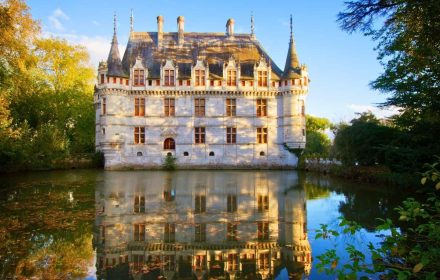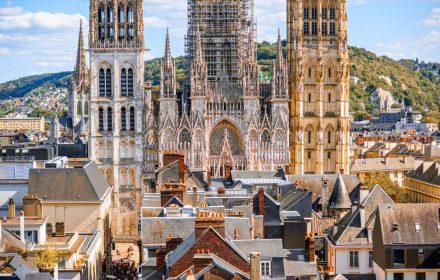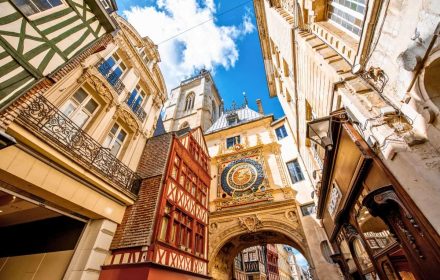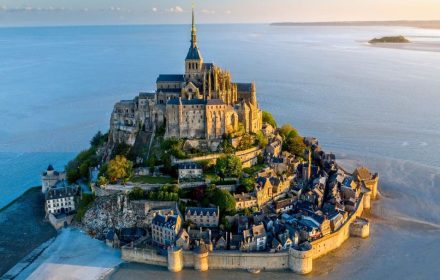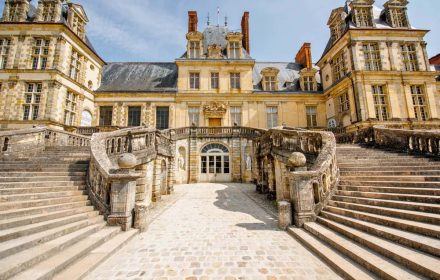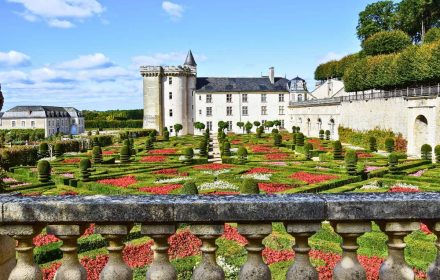This site uses affiliate links, meaning that if you make a purchase through our links, we may earn an affiliate commission.
Planning a trip to the Loire Valley but not sure where to start? This 6-day itinerary will take you through the heart of France’s most enchanting region, where storybook castles rise above the river, tiny villages feel frozen in time, and vineyards stretch as far as the eye can see. With over 300 châteaux, you could easily spend weeks exploring, but six days is just the right amount to soak up the highlights without rushing.
In this guide, you’ll discover how to spend 6 days in the Loire Valley, what to see, where to stay, and how to make the most of your time.
- 1. Day 1: Arrival in Paris, Visit to Fontainebleau, and Journey to the Loire Valley
- 2. Day 2: Château de Cheverny & Château de Chambord
- 3. Day 3: Château de Chaumont-sur-Loire & Château de Chenonceau
- 4. Day 4: Château d'Amboise
- 5. Day 5: Château de Villandry & Château d'Azay-le-Rideau
- 6. Day 6: Return to Paris (with a scenic detour)
Day 1: Arrival in Paris, Visit to Fontainebleau, and Journey to the Loire Valley
Arrival in Paris and Drive to Fontainebleau
We landed in Paris in the morning, and after grabbing our luggage, we headed straight to the rental car center at the airport. Having a car is essential for exploring the Loire Valley. There’s just no better way to reach the smaller villages and château estates at your own pace.
From the airport (we flew into Charles de Gaulle), we drove to Fontainebleau, our first stop. The fastest route is via the A6, about 110 km / 68 miles, which takes roughly 1.5 hours. If you’re coming from Orly, it’s even quicker, just under an hour (70 km / 43 miles).
This route includes toll roads, so have a credit card ready at the booths. If you’d prefer to avoid tolls, you can take the national roads (like the D606), however, it adds about 30–40 minutes to the drive, depending on traffic.
Exploring Château de Fontainebleau
Château de Fontainebleau is one of the largest royal residences in France, and one of the most historically layered. Unlike Versailles, which reflects a single era, Fontainebleau bears the imprint of eight centuries of monarchs, from medieval kings to Napoleon Bonaparte.
It was a favorite residence of François I, who invited Italian artists to reshape it in the Renaissance style, and it later became the stage for Napoleon’s dramatic farewell before his first exile in 1814.
One of the château’s most iconic features is the Horseshoe Staircase, added during the reign of Louis XIII in the 17th century.
With its graceful double curve and grand symmetry, it served as a ceremonial entrance for monarchs and guests arriving at the palace. It was also the site of Napoleon’s emotional farewell to his troops in 1814—a moment etched into French history.
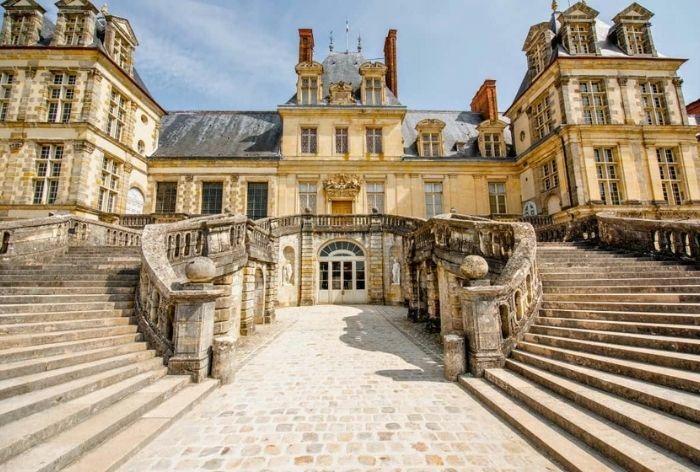
The Horseshoe Staircase / How to Spend 6 Days in the Loire Valley
Inside the château, three highlights stand out. The Francis I Gallery is one of the first examples of Renaissance decoration in France, with gilded woodwork, frescoes, and richly painted panels that set the stage for French royal style for centuries.
The Throne Room of Napoleon is the only one of its kind still preserved in France, complete with the emperor’s original chair, rich velvet drapery, and imperial symbols.

The Francis I Gallery
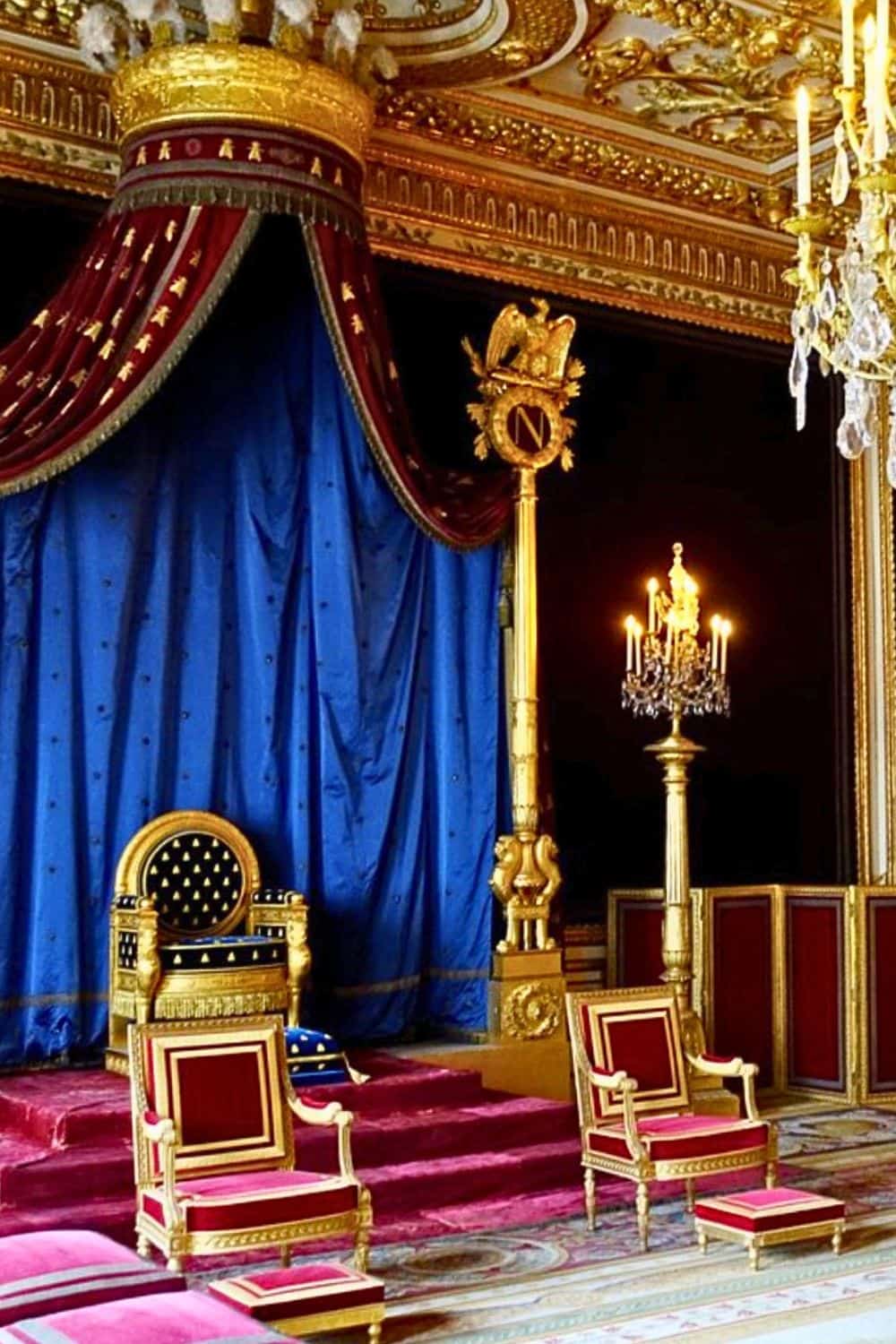
The Throne Room
The château grounds cover over 130 acres of formal gardens, canals, and wooded paths.
The most famous feature is the Grand Parterre, designed by André Le Nôtre and Louis Le Vau, which remains the largest formal garden in Europe, stretching across 45,000 square meters.
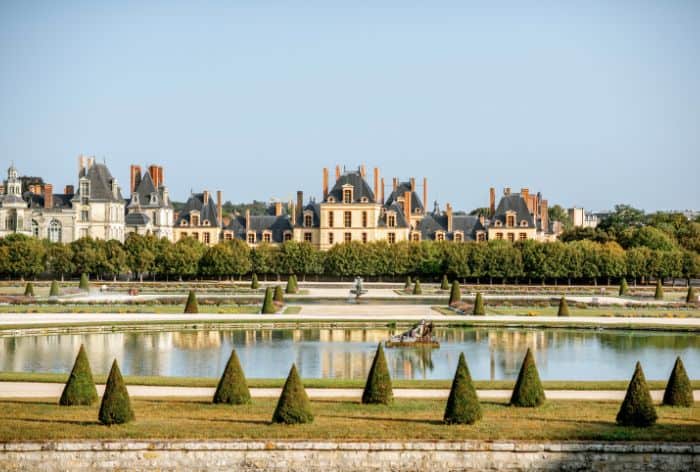
The Château Grounds / How to Spend 6 Days in the Loire Valley
Drive to the Loire Valley and Check In at Les Sources de Cheverny
From Fontainebleau, it’s about a 2.5- to 3-hour drive (220 km / 137 miles) to the heart of the Loire Valley. The fastest route is via the A10.
If you want to avoid tolls, then head southwest on the D606, then connect to the D952, which largely follows the Loire River and passes through charming small towns and countryside. This route will take about 4 to 4.5 hours, and while it’s slower, it’s also more picturesque and relaxing.
We stayed for 3 nights at Les Sources de Cheverny, a peaceful retreat tucked among vineyards and forested land. After checking in, it was the perfect place to unwind, enjoy a leisurely dinner on-site, and get ready for the days of château hopping ahead.
Day 2: Château de Cheverny & Château de Chambord
Château de Cheverny
Start your second day in the Loire Valley with a visit to Château de Cheverny, one of the region’s most elegant and beautifully maintained estates.
The château has been continuously inhabited and furnished by the Hurault family for over six centuries.
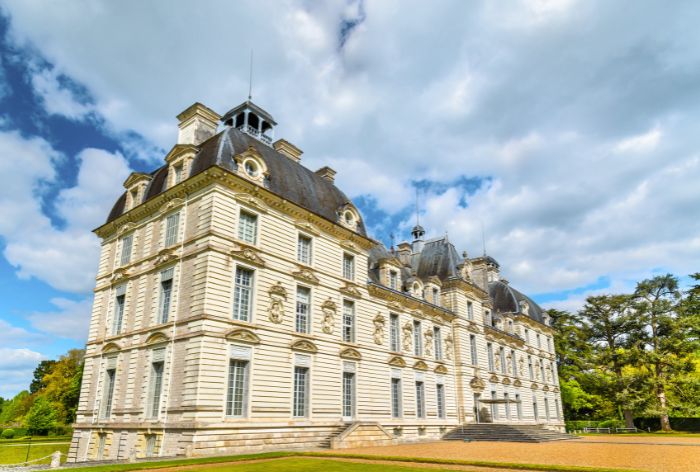
Château de Cheverny / How to Spend 6 Days in the Loire Valley
One of the standout spaces is the Grand Salon. You’ll be amazed by the painted ceiling that seems to reach out to you. The vibrant colors and detailed artwork are nothing short of breathtaking! It feels ike a masterpiece hanging right above you. Make sure to take a moment to look around. Notice the 17th-century Flemish tapestries hanging on the walls.
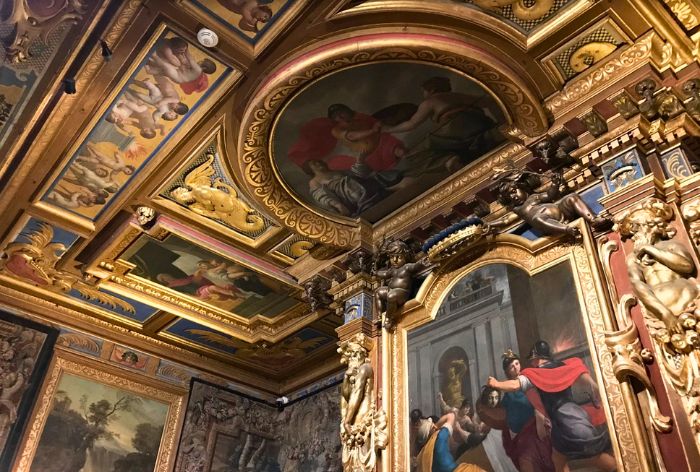
The Grand Salon / How to Spend 6 Days in the Loire Valley
Another room you should not miss is the Dining Room. It is simply beautiful! You will see wood paneling decorated with 34 painted scenes from Don Quixote, created in the 19th century!
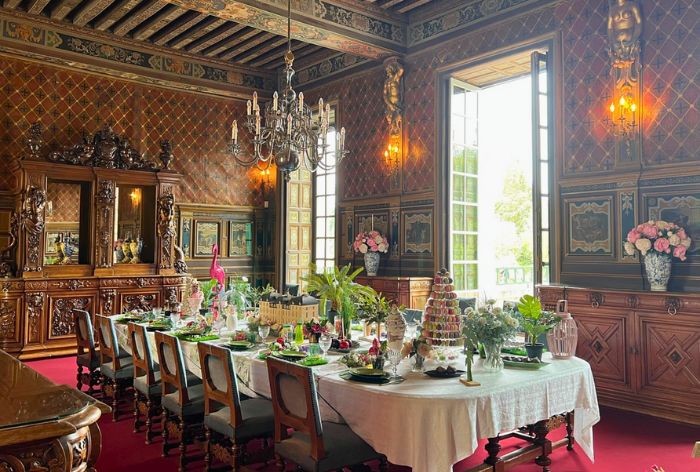
The Dining Room / How to Spend 6 Days in the Loire Valley
If you’re a fan of The Adventures of Tintin, you’re in for a treat at Château de Cheverny! The château was the real-life inspiration for Marlinspike Hall, the grand residence of Captain Haddock in Hergé’s comic series.
Inside the permanent Tintin exhibition, you can step into the world of Tintin with life-sized scenes straight from the comics.
One of the most unique features of Château de Cheverny is its working kennels, home to around 100 French hounds. These aren’t just any dogs—they are a carefully bred mix of English Foxhound and French Poitevin, selected for their strength, stamina, and discipline.
This long tradition of hunting with hounds dates back centuries and remains an integral part of life at Cheverny.
The highlight is feeding time, which takes place at 11:30 AM most days.
Château de Chambord
After exploring Cheverny, head to Château de Chambord, about a 25-minute drive (17 km) through peaceful countryside.
Chambord is the largest and most extravagant château in the Loire Valley. Built by King Francis I in the 16th century, it was meant to impress more than to live in. With over 400 rooms, 80 staircases, and a roofline that looks like a city of chimneys and towers, it’s a monument to royal ambition.
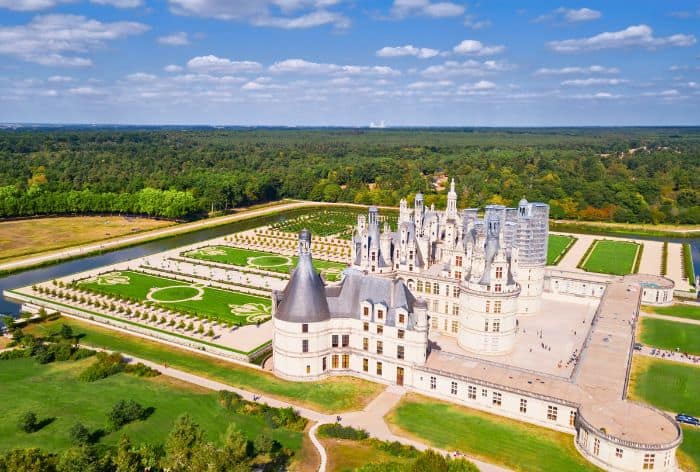
Château de Chambord / How to Spend 6 Days in the Loire Valley
The double-helix staircase at the heart of the château is one of its most iconic features. It’s designed so that two people can go up and down at the same time without ever crossing paths. The structure is both elegant and puzzling, and legend says Leonardo da Vinci had a hand in the design.
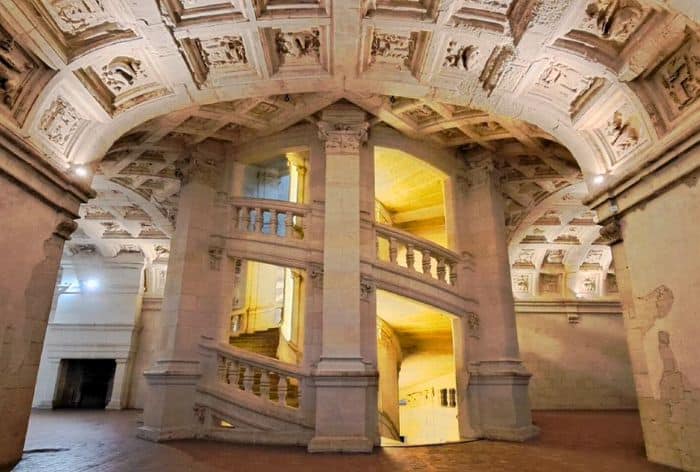
The Double-Helix Staircase / How to Spend 6 Days in the Loire Valley
The rooftop terrace offers sweeping views and a close look at Chambord’s dramatic architecture. You can walk among sculpted chimneys, spires, and towers, all arranged with perfect symmetry. It feels like wandering through a stone forest high above the grounds.
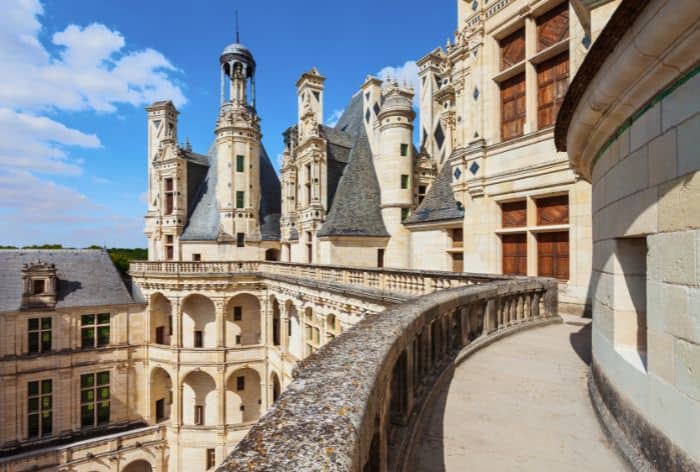
The Rooftop Terrace / Hpw to Spend 6 Days in the Loire Valley
The formal gardens at Château de Chambord were fully restored in 2017 using old plans from the 1700s.
Laid out in perfect symmetry, the gardens stretch across 16 acres with neat hedges, gravel paths, and sweeping views of the château’s grand façade.
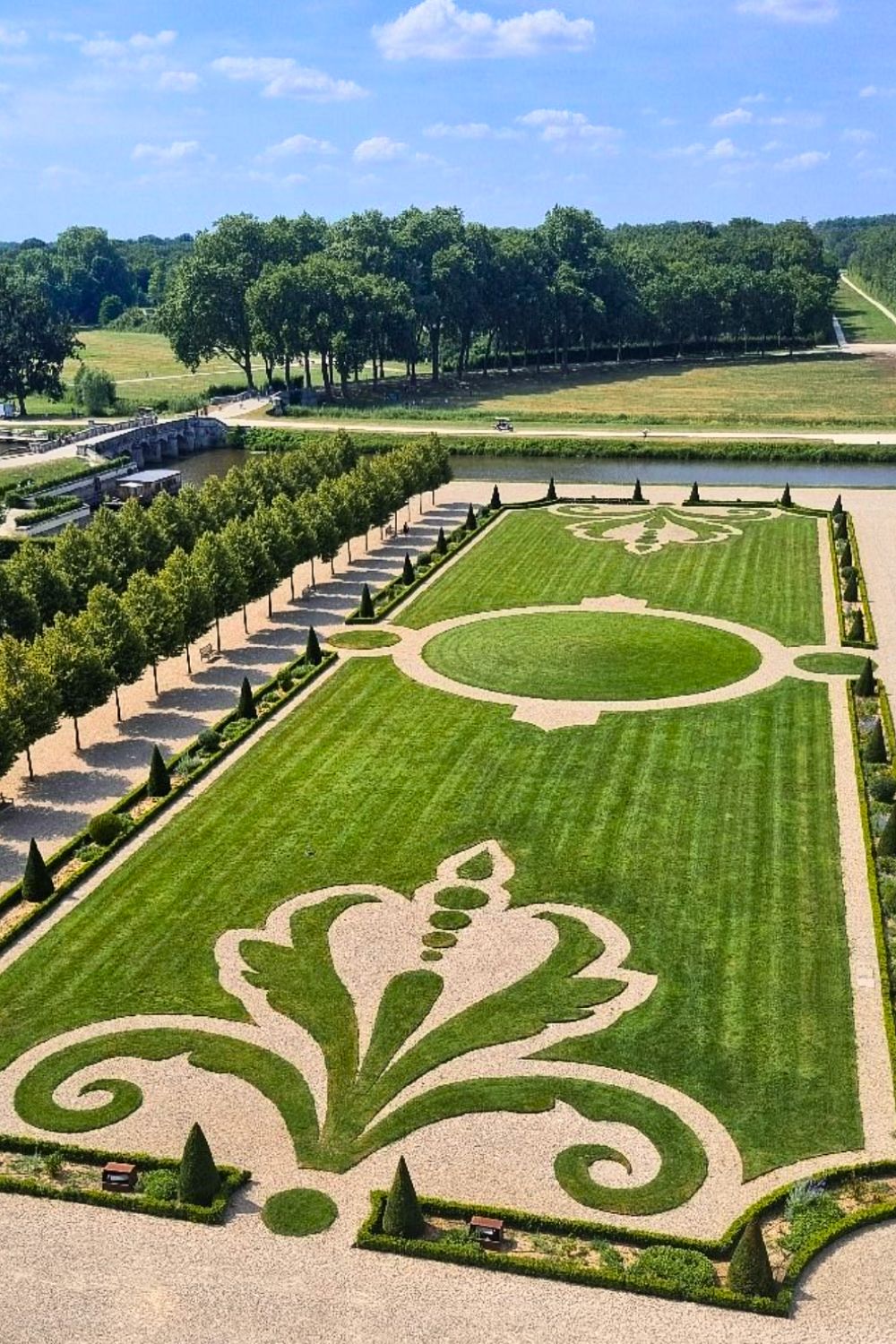
The Formal Gardens at Château de Chambord
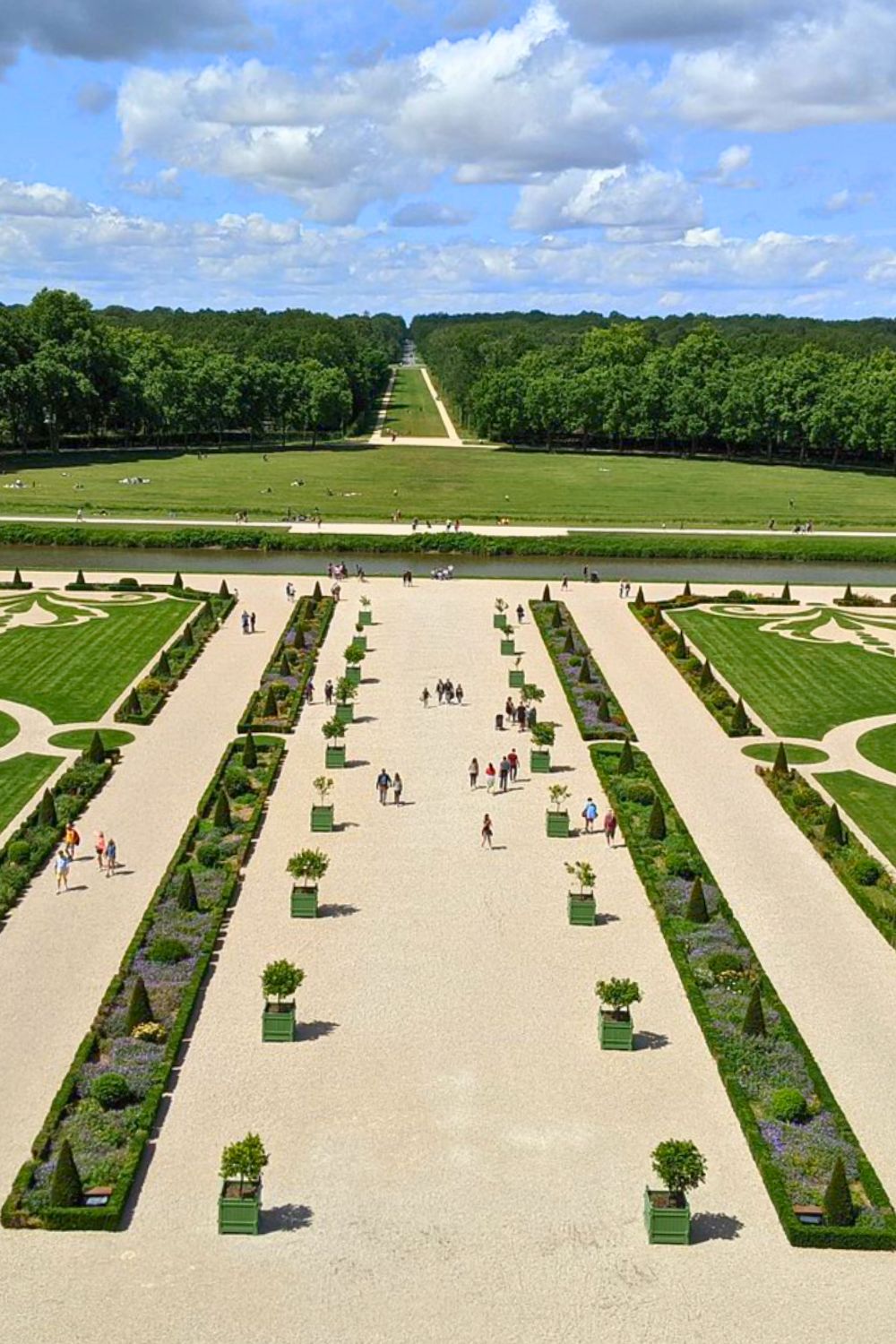
The Formal Gardens at Château de Chambord
Day 3: Château de Chaumont-sur-Loire & Château de Chenonceau
Château de Chaumont-sur-Loire
Start day three with a visit to Château de Chaumont-sur-Loire, a castle with over a thousand years of history.
Originally built in the 10th century to control the Loire River, it was later owned by powerful figures like Catherine de Medici and Diane de Poitiers. Today, the château is known just as much for its historic rooms as its contemporary art and gardens.
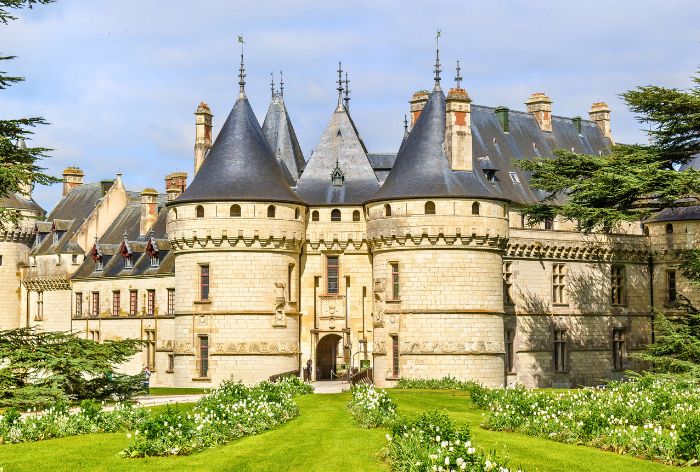
Château de Chaumont-sur-Loire
One of the highlights is the Ruggieri Room, named after Cosimo Ruggieri, an astrologer who worked closely with Catherine de Medici.
It reflects the queen’s interest in astrology, with dark wood paneling, period furnishings, and symbols that hint at the mystical.
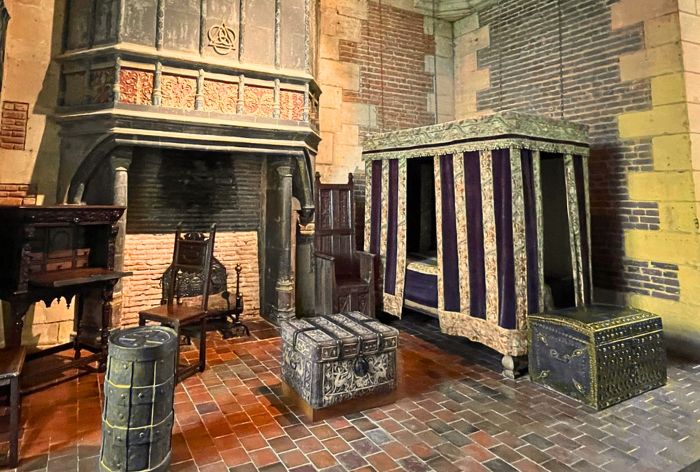
The Ruggieri Room / How to Spend 6 Days in the Loire Valley
Another highlight for us was the Catherine de Medici Room. Once used by the queen herself, this room holds a 16th-century throne and a carved wardrobe with symbolic figures representing virtues and the senses.
You’ll also find rare terracotta medallions from the 1700s featuring portraits of historical figures like Marie-Antoinette and Benjamin Franklin.
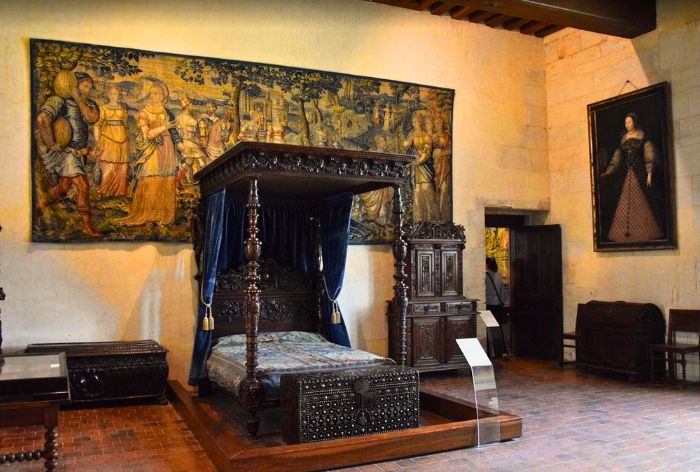
The Catherine de Medici Room / How to Spend 6 Days in the Loire Valley
From April to November, the château hosts the International Garden Festival that showcases creative landscape designs from around the world.
Even outside festival season, the permanent gardens, including the Garden of the Senses and the vegetable parterre, are beautifully maintained and open to explore.
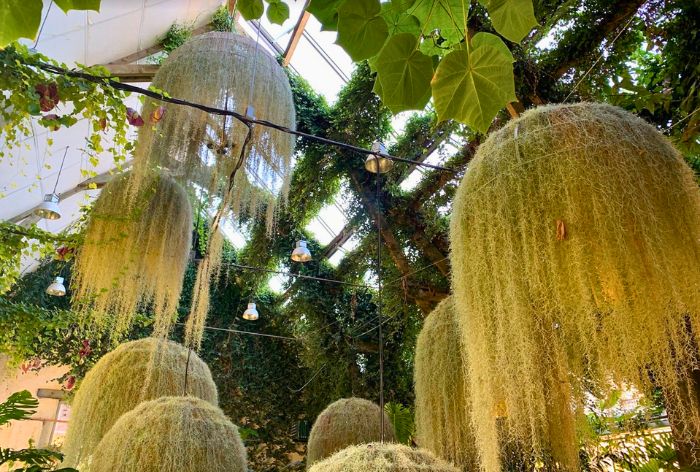
International Garden Festival / How to Spend 6 Days in the Loire Valley
Château de Chenonceau
After leaving Château de Chaumont-sur-Loire, head to Château de Chenonceau. It’s just about 20 kilometers away, an easy 25-minute drive through peaceful countryside.
This château is one of the most beloved in the Loire Valley, and it’s easy to see why. Built over the River Cher, its graceful arches and soft white stone make it feel almost weightless.
Known as the “Ladies’ Château,” it was shaped over the centuries by powerful women who added their own flair and vision.
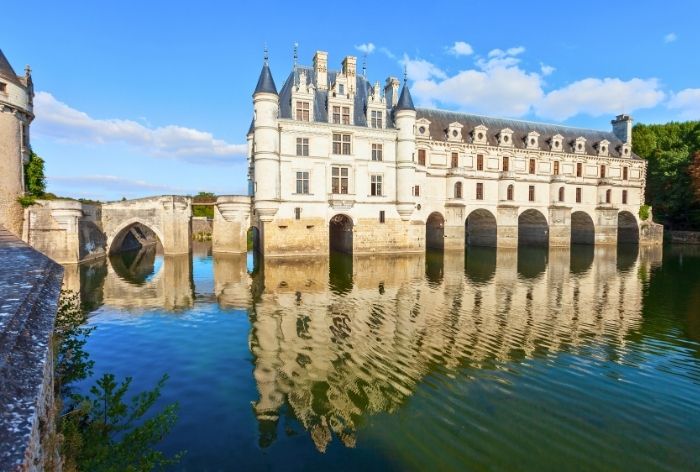
Château de Chenonceau
One of the best highlights is the Grand Gallery. This long, light-filled hall stretches right across the river, with 18 windows looking out on the water.
It was once used for dances and celebrations, and during World War I, it served as a hospital ward. Walking here feels like stepping into both elegance and history at once.
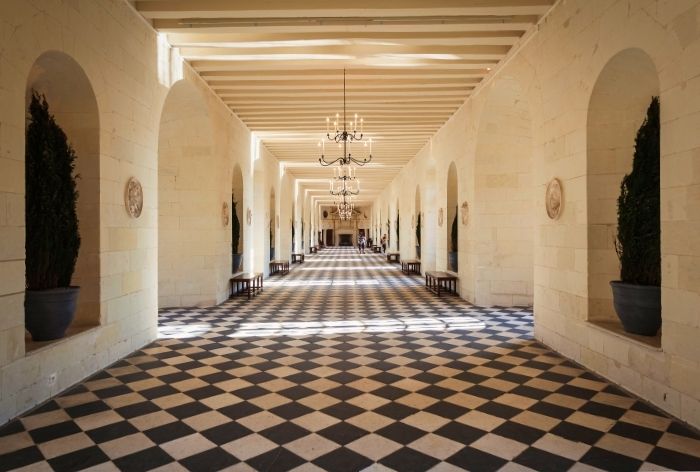
The Grand Gallery / How to Spend 6 Days in the Loire Valley
Another highlight is Catherine de Medici’s Bedroom. This room, richly decorated with dark wood, tapestries, and royal emblems, belonged to one of the most influential women in French history. It’s grand but still feels personal.
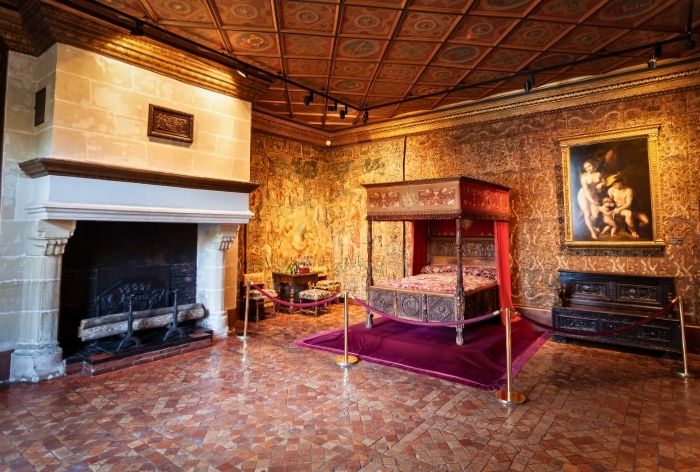
Catherine de Medici’s Bedroom / How to Spend 6 Days in the Loire Valley
Make sure to spend some time in the gardens. There are two main gardens here, one created by Diane de Poitiers and the other by Catherine de Medici.
Diane’s is all symmetry and fountains, while Catherine’s is smaller and more private, with neat hedges and quiet corners. Both are beautifully maintained and worth wandering slowly.
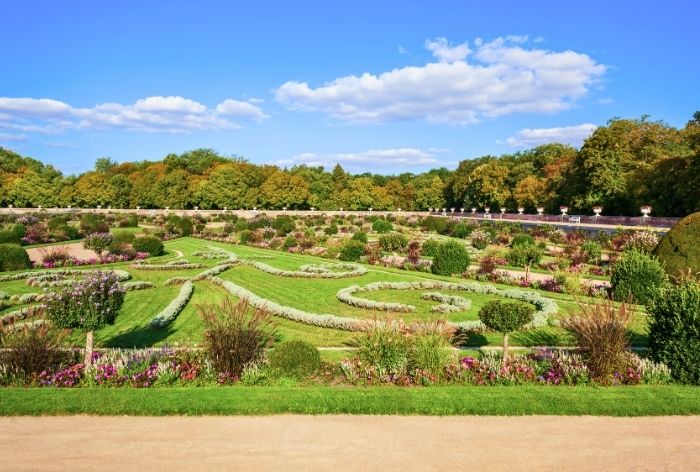
Diane’s Garden / How to Spend 6 Days in the Loire Valley
Day 4: Château d'Amboise
On day 4 in the Loire Valley, we checked out from our accommodations and headed to Château d’Amboise, one of the most historically significant castles in the region, perched high above the Loire River.
One of the most poignant aspects of Château d’Amboise is its connection to Leonardo da Vinci. The famed artist and inventor spent the final years of his life in the château at the invitation of King François I, and his presence is still felt throughout the site.
Leonardo is buried in the château’s chapel, Saint-Hubert Chapel, where his tomb can be visited. The chapel itself is a beautiful example of late Gothic architecture.

Château d’Amboise
One of the best rooms to step into is the Great Hall. This was where royal life truly unfolded; feasts, court ceremonies, and important meetings all happened under its vaulted ceiling.
The hall is lined with massive Gothic windows and period pieces that give a real sense of the scale and splendor of court life.
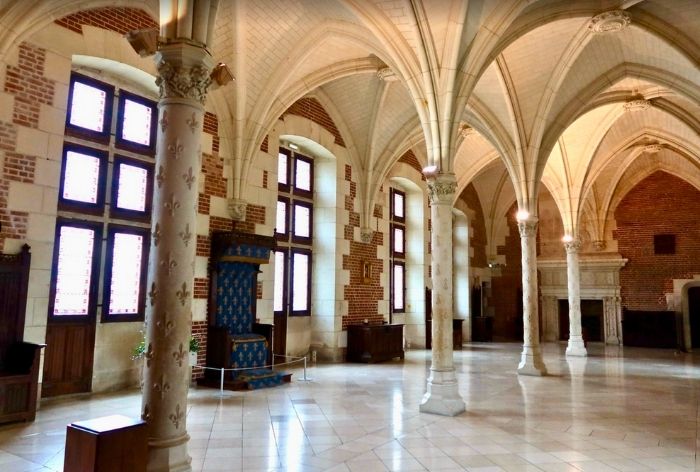
The Great Hall / How to Spend 6 Days in the Loire Valley
Another highlight is the Orléans Room. It reflects the château’s later years under Louis-Philippe and the Orléans family, showing how the space shifted over centuries.
It feels more refined and personal, with a 19th-century elegance that stands apart from the older Renaissance rooms.
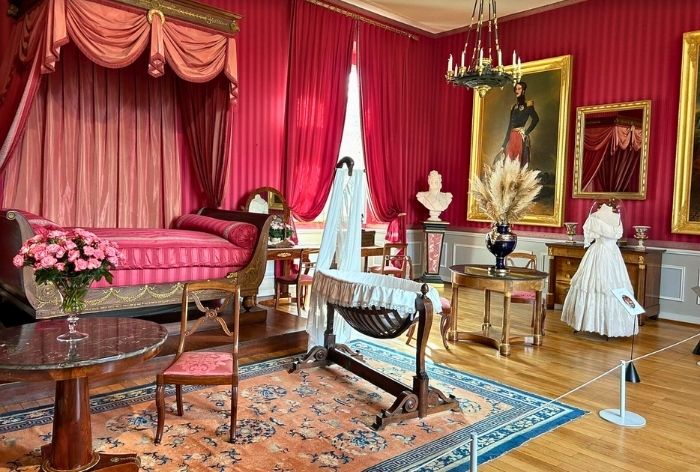
The Orléans Room / How to Spend 6 Days in the Loire Valley
Don’t miss the Minimes Tower, with its spiral ramp wide enough for horses and carriages. It was designed so people could ride or drive directly up into the château from the town. Walking it today gives a whole new appreciation for how clever the original design really was.
The Heurtault Tower also stands out, offering the same kind of spiral access. These towers weren’t just for defense—they made it possible to move easily between the upper terrace and the lower grounds. It’s a simple detail, but one that made the château incredibly advanced for its time.

The Minimes Tower / How to Spend 6 Days in the Loire Valley
After exploring the château and soaking in the sights, we made our way to Château de Rochecotte, where we stayed for 2 nights.
This elegant château provided the perfect retreat after a busy day of sightseeing. Surrounded by tranquil gardens and peaceful countryside, it was a wonderful place to relax.
Day 5: Château de Villandry & Château d'Azay-le-Rideau
Château de Villandry
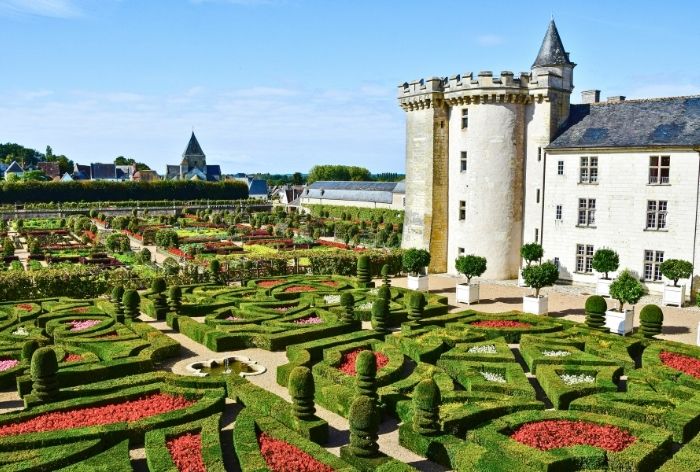
Château de Villandry
Start your day 5 in the Loire Valley with a visit to Château de Villandry, the last of the great Renaissance châteaux built along the Loire.
Completed in 1536, it was later restored in the early 1900s by Spanish doctor Joachim Carvallo, who also designed the famous gardens. While the château is elegant inside, the gardens are what truly set it apart.
Don’t miss the Dining Room, which was updated in the early 20th century with a traditional Spanish ceiling and family portraits that reflect Carvallo’s heritage.
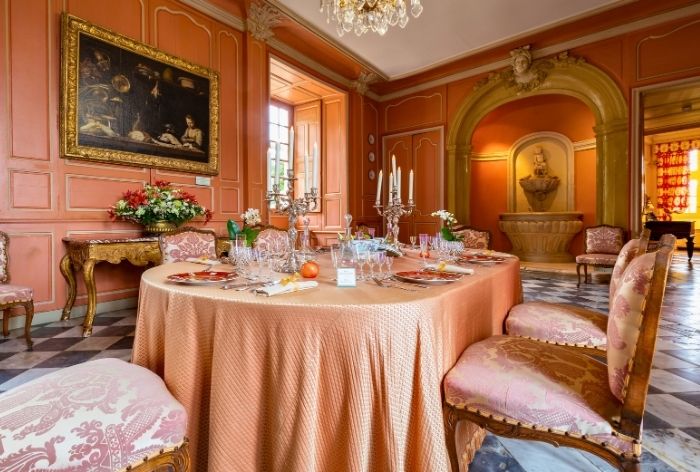
The Dining Room / How to Spend 6 Days in the Loire Valley
In Prince Jérôme’s Bedroom, the richly patterned wallpaper and polished wooden furniture give a glimpse into 19th-century aristocratic life.
Jérôme Bonaparte, Napoleon’s younger brother, lived here briefly, and the room still carries the quiet dignity of its former royal guest.
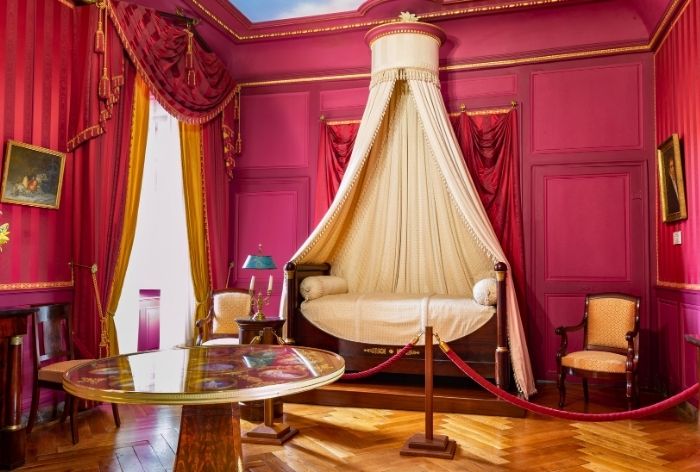
Prince Jérôme’s Bedroom / How to Spend 6 Days in the Loire Valley
Step outside into the gardens, where symmetry and symbolism come together in living color.
From above, you can see the “Love Gardens,” each representing a different kind of love through shape and design.
The kitchen garden, with its checkerboard rows of vegetables and flowers, is just as precise, where every season brings a new pattern.

The Gardens / How to Spend 6 Days in the Loire Valley
Château d'Azay-le-Rideau
Next up is Château d’Azay-le-Rideau, one of the most picturesque stops in the Loire Valley. Built between 1518 and 1527 on an island in the Indre River, it’s a prime example of early French Renaissance architecture.
The château was commissioned by Gilles Berthelot, the mayor of Tours, and though he never got to see it finished, the result is breathtaking, especially the iconic mirrored reflection in the water.
It’s smaller than some of the other châteaux, but its charm and setting make it unforgettable.
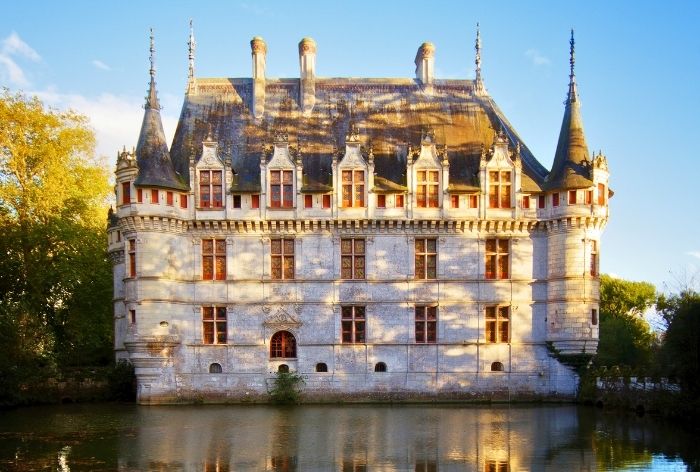
Château d’Azay-le-Rideau
The central staircase is one of the first straight-flight staircases built in France, a bold move at the time. It’s open and airy, with sculpted columns and intricate details that mix Gothic traditions with Renaissance elegance.

The Central Staircase / How to Spend 6 Days in the Loire Valley
f you want to see how French nobility lived during the early 1500s, the Renaissance Chamber is the place to start.
Located on the first floor, this room once belonged to Philippe Lesbahy, the wife of Gilles Berthelot, the man who built the château. It’s been carefully restored to reflect the style and atmosphere of the French Renaissance.
The first thing you’ll notice is the magnificent four-poster bed, covered in richly woven fabrics with patterns inspired by 16th-century designs. Beds like this weren’t just for sleeping, they were a symbol of power and status. Wealthy owners often received close friends and visitors in their chambers, and a bed this grand was meant to impress.
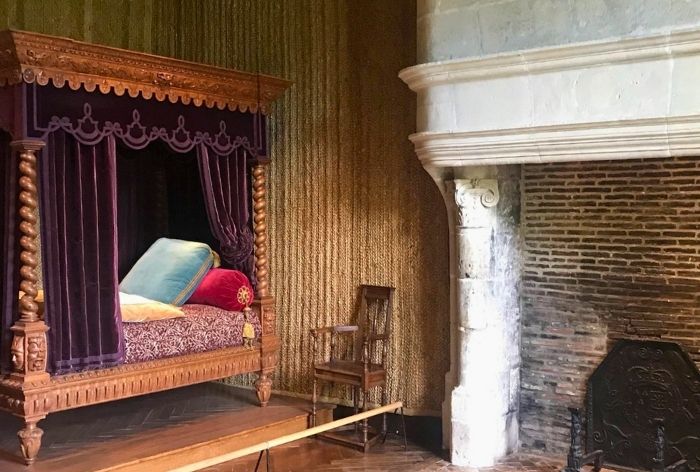
The Renaissance Chamber / How to Spend 6 Days in the Loire Valley
Don’t miss the King’s Chamber. This richly decorated room only hosted royalty once, but what a visit it was. In 1619, King Louis XIII stayed at Château d’Azay-le-Rideau for two nights. This brief royal visit was enough for the room to earn its lasting title.
One of the most striking pieces is a cabinet made of dark pearwood, crafted to mimic the look of expensive ebony. It’s not just beautiful; it’s detailed with ivory and bone plaques that show scenes from the Thirty Years’ War, a brutal conflict that raged during Louis XIII’s reign.
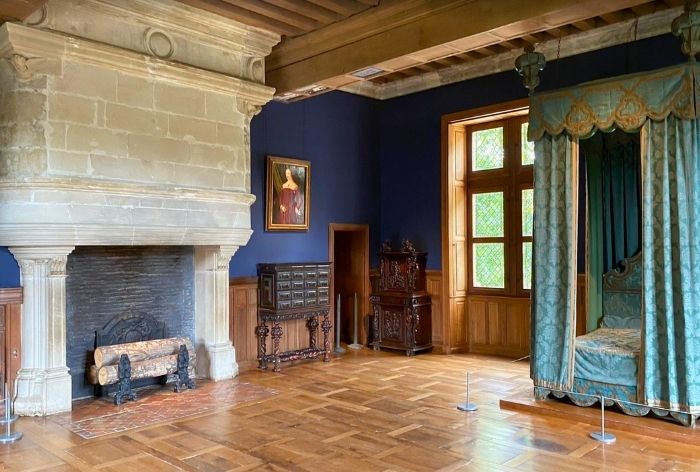
The King’s Chamber / How to Spend 6 Days in the Loire Valley
Day 6: Return to Paris (with a scenic detour)
After checking out of Château de Rochecotte, we started our journey back to Paris, but not before taking a detour to experience a few more of France’s treasures.
Our first stop was Mont Saint-Michel, one of the most iconic and magical sites in France. This stunning island commune, perched above the sea, is renowned for its medieval abbey that rises dramatically against the sky. As we approached, the abbey seemed to appear out of nowhere, its towering spires reflected in the surrounding tidal waters.
We spent the night at Mont Saint-Michel and stayed at Le Relais Saint Michel, and it was a great balance between convenience and comfort. It’s a bit more expensive than other nearby hotels, but if you want a quieter, more relaxed experience while still being close to the island, we say it’s worth it.
The next morning, we left Mont Saint-Michel and drove along the scenic coast to Etretat, famous for its dramatic cliffs and awe-inspiring sea views. The Alabaster Coast, as this region is known, offers some of the most striking coastal scenery in France.
Afterward, we headed to Rouen, a charming medieval city filled with history and culture. One of the highlights of Rouen is its stunning cathedral, the Cathédrale Notre-Dame, which has one of the tallest spires in France. Rouen’s cobbled streets, lined with half-timbered houses, take you on a journey through the past, and we enjoyed exploring the old town with its vibrant squares, cafés, and boutiques.
Finally, we continued our journey back to Paris. We stayed close to the airport at ibis Paris CDG Airport.
The next day, it was time to fly back home, although if you have more time, France has countless other gems waiting to be discovered!
Here Are Some More Ideas of Places to Visit in France:
How to Visit Fontainebleau on a Day Trip from Paris (13 Best Things You Can’t Miss)
13 Tips for First Visit to Rouen to Help You Explore the City
DIY Walking Tour of Rouen (17 Best Stops, Map and Tips)
What to See at Château de Chaumont-sur-Loire (12 Things You Can’t Miss + Useful Tips)
7 Must-See Châteaux in the Loire Valley for First-Time Visitors (What to See + Practical Tips)
Perfect One Day in Étretat (5 Top Things You Can’t Miss + Practical Tips)
Did You Find It Useful? Why Not Save How to Spend 6 Days in the Loire Valley to Pinterest!


Now, It Is Your Turn, I Would Like to Hear Back from You!
Are you planning your trip to France?
Please let me know! Drop me a quick comment right below!
Click on any of the images below to get inspired and to help you with the planning process for your trip to France!
